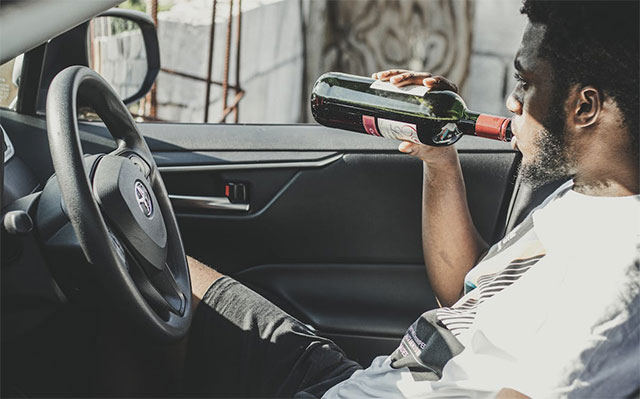According to the National Highway Traffic Safety Administration (NHTSA), 10,850 people died on average between 2012 and 2021 from preventable crashes caused by drunk drivers. Although Driving Under the Influence (DUI) or Operating a Motor/Vehicle Impaired (OMVI/OVI) is illegal in every U.S. state, drunk drivers kill approximately one person which could be themselves, a passenger, another driver, a passenger in another vehicle, or a pedestrian, nearly every 40 minutes.

Of course, the numbers show that the danger of driving under the influence is far worse than people realize. The NHTSA estimates that drunk drivers cause nearly a third of all domestic deaths related to vehicle crashes (31%). Drunk driving accidents occur in cities, rural areas, and small towns across the nation. The small city of Spokane, Washington experienced 228 alcohol related incidents alone in 2021.
Table of Contents
What is DUI of Alcohol?
Simply stated, any driver who has a Blood Alcohol Concentration (BAC) of .08 grams (i.e., alcohol) per deciliter of blood (.08 g/dL) from a blood or breathalyzer is considered a “drunk” driver. That said, the amount of alcohol that affects people varies from person to person. A driver might be a so-called “lightweight” who becomes drunk from only a tiny amount of alcohol.
Per the NHTSA, drunk drivers with BACs below .08 g/dL killed 2,266 people in 2021. Although most states, as well as the District of Columbia and Puerto Rico, recognize the .08 g/dL limit, Utah set its limit to .05 g/dL for this reason.
Why Is Alcohol a Problem?
Believe it or not, our bodies consider alcohol a poisoned beverage. Intoxication occurs because of substances in alcohol that adversely impact the human brain by altering cells and chemicals. Several organs break down alcohol after it enters the body, including the stomach, intestines, pancreas, liver and brain. Substances in alcohol then move quickly through the body because alcohol dissolves rapidly in water, which makes up approximately 60% of the body. It also passes quickly through the small intestine into blood cells that can transport it outside the gastrointestinal tract.
When organs, especially the liver, break down alcohol, additional toxic substances spread throughout the body, such as acetaldehyde. This molecule causes cell and tissue damage. When a person binges or drinks high amounts of alcohol over time, their organs can’t process it and release these toxins into the bloodstream.
In the brain, alcohol sets off receptors that slow cognition. When this happens, it interferes with the mental and physical processes and senses that all drivers need to perform safely. It causes slurred speech, slower thinking, reasoning and reaction times, memory problems, loss of motor control, impaired hand-eye and muscle coordination and vision, and lowered inhibition. These symptoms often occur alongside drowsiness, an upset stomach, a headache, high blood pressure or a dangerously fast heart rate.
What Are the Consequences of DUI?
A distracted and impaired driver might brake at inappropriate times, fail to judge distances accurately, impact another vehicle from behind, forget the rules of the road, hit instead of avoid people, animals and non-vehicle obstacles, or even experience road rage. Outside of fatalities, they can cause anyone they hit to experience permanent injuries that require countless years of expensive medical treatments. They can cause equally costly property damage. Every accident also pulls first responders from other emergencies and increases local and national economic problems.
A drunk driver’s addiction can lead to chronic health problems like brain damage and behavioral changes, oral, breast and GI cancers, heart disease, and liver disease. These drivers typically lose license points or experiences a lengthy suspension. Some people can never drive again. They must also pay fines. With serious injuries and fatalities, drivers often face a vehicular manslaughter charge and imprisonment. Alcohol addiction and DUI can destroy a drunk driver’s personal and work relationships and cause the loss of employment, housing and other necessities.
In recent years, the NHTSA and various states have required drunk drivers to install a breathalyzer device known as an ignition interlock in their vehicles. If the driver has a BAC above a .02 or .05 g/dL limit, their vehicle’s ignition won’t work.
What Can You Do Today?
If you’re sober at a bar, party or other venue and see an impaired driver about to leave, offer them a ride or call a taxi. If you like to get a bit tipsy now and then, enjoy the intoxication with sober friends or loved ones who can drive you from place to place or just stay home.
Of course, it’s easy to say to someone that they should never drink away from home unless they have a sober driver or alternative transportation option (i.e., ride-hail or ride-share). The biggest problem is that many people who drive under the influence have an addiction that needs professional treatment. If you think you or someone you know needs help, it’s time to contact a local rehabilitation center.













